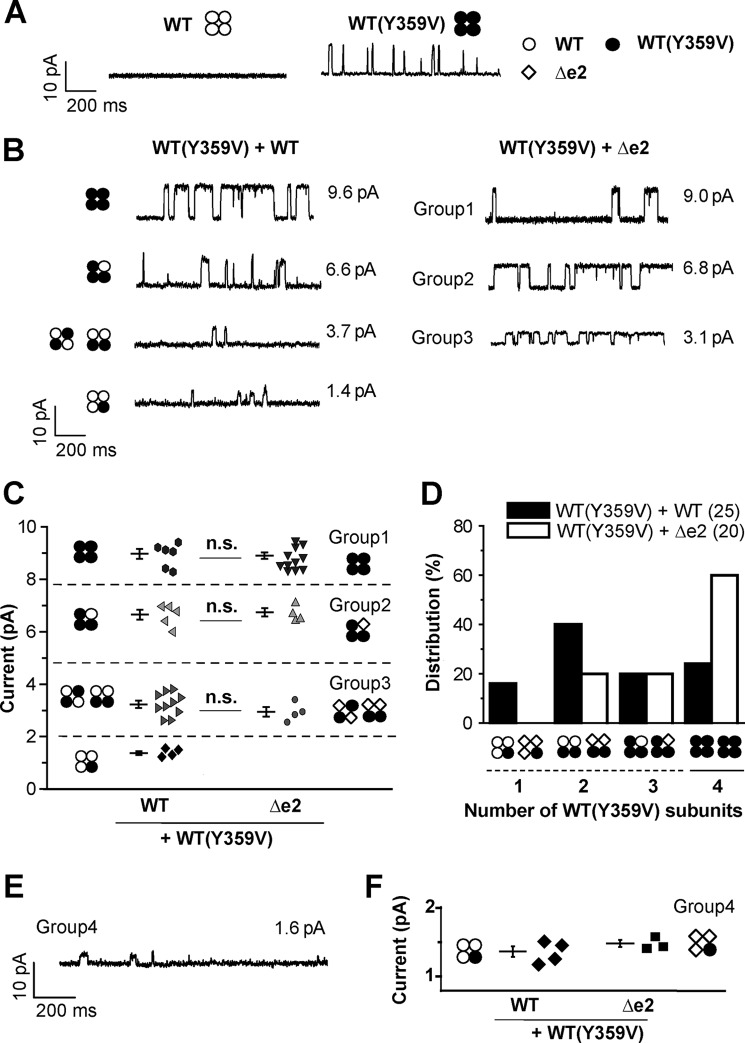FIGURE 3.
BKα tetramer containing one, two, or three BKαΔe2 subunits in PM can permeate K+. A, single channel currents recorded in the presence of 2 mm TEA in the pipette solution. WT, WT(Y359V), and Δe2 subunits are presented by white circles, black circles, and white diamonds, respectively, in this figure. B, single channel currents recorded in cells expressing WT(Y359V)+WT (no mutation) (left) or cells expressing WT(Y359V)+Δe2 (right) at +50 mV in the presence of TEA. Cells were transfected with cDNA at a ratio (WT(Y359V):WT or WT(Y359V):Δe2) of 1:1. Each potential hetero-tetramer complex in a cell expressing WT(Y359V)+WT is also illustrated in the current traces. Note that unitary current distribution was divided into three distinct groups (Groups 1–3) in cells expressing WT(Y359V)+Δe2. C, scatter plots of the unitary current amplitude recorded in cells expressing WT(Y359V)+WT (25 recordings from 12 patches) or cells expressing WT(Y359V)+Δe2 (20 recordings from 16 patches). There was no significant difference in the distribution (p > 0.05 by F test) and mean value (n.s., p > 0.05 by t test) between the two types of cells. Predicted model of hetero- or homo-tetramer complexes are shown in both sides of the scatter plots. D, frequency distribution (%) of channels including the predicted number of WT(Y359V) within the single tetramer complex. Here the number of recordings that contained single channel currents due to each complex of BKα tetramer were counted. The total number of BKα tetramers within each patch could not be confirmed in this study. See “Experimental Procedures” for details. E, only when membrane patches were excised from cells exhibiting very strong fluorescence derived from Δe2-GFP, unitary currents smaller than 2 pA were detected. Cells were transfected with cDNA at a ratio (WT(Y359V)-mCh:Δe2-GFP) of 1:1. F, the unitary currents were compared with those of WT/WT(Y359V) = 3:1. There is no significant difference between the two groups (n = 4 in WT/WT(Y359V) and n = 3 in Δe2/WT(Y359V), p > 0.05). The data of WT/WT(Y359V) group here are the same as presented in C.

